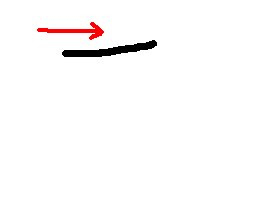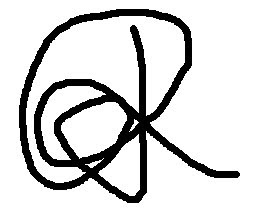Just to name a few random reasons; so that your teacher can read your Japanese (if you are learning it), so that you can feel more confident in your Japanese, so that writing Japanese is more fun etc.
But the main message I want to get across is that;
To be able to write Japanese neatly is in itself part of Japanese culture, and knowing how to write neatly will improve your understanding of it.
So here goes.
1. Learn the stroke order
That's all fine if you just want to know the alphabet. But if you really want to be able to write neatly and hence get an understanding of the Japanese culture, you must start at this step.
I'm sure you're all aware that Hiragana and Katakana are based off of kanji (Chinese characters) and that kanji all have a specific stroke order. In a way it then makes sense that Hiragana and Katakana should follow a stroke order too.
But the most essential reason you should follow the stroke order is balance. All letters and kanji are balanced, that's why they look so damn good. Each stroke that follows is intended to retain the balance of the entire letter. Hence if you have a different stroke order, you will not have the same balance that a properly done letter will have.
I'm sure at times you have thought "ok I copied that letter exactly how it should be, but it doesn't look as good". Chances are you have done the wrong stroke order. If you are defiant you have done the correct stroke order then the next sections are for you.
Bare with me while I try to demonstrate what I have just said with the Hiragana letter 'a' (あ). (I am using Microsoft paint with a mouse, but I'll try my best)
Who can tell me which one looks neater?
If you said the second one, you should do some more homework.
I didn't just try and make the second one more crappier than the first, I just incorporated a different stroke order and tried to maintain an overall balance.
To go through the correct stroke order;
 |
| stroke one |
 |
| stroke two |
 |
| stroke three |
So essentially if you follow the correct stroke order, it will be easier to balance, hence it will look neater.
2. Make it flow
For every letter, the strokes are meant to flow from the last stroke to the next. So to put it simply it's like running writing, only you lift the pen/pencil/brush after every stroke and put it back down for the next, while keeping the flow going.
To demonstrate with the kanji for water 'mizu' (水);
Which one is more balanced?
This one is probably a little tough because I followed the correct stroke order for both, but I continuously flowed with one and with the other being a stroke and re-aim approach.
The answer is the second one is more balanced.
If you disagree then look again, look at the kanji as a whole.
I will demostrate to you what I mean by a continuous flow;
Yes in all of this the kanji for water.
This is what I mean by making it flow. Your strokes should do movements like these. The more circular and flowing the stroke to stroke movement, the more neater your letters and kanji will become.
3. Non-uniformity
Don't do it like this. All of the strokes are of equal length and width, this is a no-no. I know kanji may just look like symbols you find in mathematics, but kanji are not meant to be blocky things. The above kanji should look more like this;
There is no uniformity as such, it gives the kanji some character (no pun intended).
4. Never redo a stroke
This may be what you do as a reaction to a stroke you believe has gone bad. Never ever trace over the stroke again, never ever sketch over it again. The keyword is balance, try to maintain the balance in the next stroke. If it's no good, start all over again.
Here's what I mean by retracing;
Here's what I mean by sketching;
Please don't do it. Every stroke is designed to be one simple stroke. You are only making it harder for yourself to retain balance.
These are just a few tips as to writing neatly. There are loads more specific techniques that are involved, but there are no singular rules governing overall what every letter or kanji should abide by. That's why it's so hard. It becomes very specific, so I have decided to leave it at that. These are probably the general rules that you should keep in mind to become a neater writer of Japanese.
Hopefully with these rules and enough practice you can get a feeling for what Japanese culture has to offer in terms of literacy.
Here is a scan of my hand writing. It's not the best piece of work, but I think (hope) you'll agree that it is neat-looking;
If you have any queries or comments, feel free to leave me an e-mail or comment in the section below.











4 comments:
Thanks lots, that was very helpful!
that was indeed very helpful, I've been trying for a long time to get the characters right and fluid but it hasnt worked that great even when writing them in the correct stroke order, now I see what i was doing wrong thank you
Fantastic breakdown. This will be helpful for beginners in Japanese - – lots of detail.
I have seen the following 10k words lengthy post at How to Survive Your Short Stay in Japan (Learning Japanese the Easy Way)
This will be helpful for short time travelers.
just my 2 cents on this.
enjoy
Dave
Thanks
Post a Comment